Echinodorus amazonicus
Scientific name: Echinodorus amazonicus
Family: Alismataceae
Maximum size reached under cultivation: 30 - 50 cm (11.81 - 19.69 inch)
014
Recommended pH range: 6.5 - 7.2
Recommended water hardness: 4 - 18°dGH (71.43 - 321.43ppm)
0°C 32°F30°C 86°F
Recommended temperature range: 22 - 30 °C (71.6 - 86°F)
Preferred propagation method: Runners
Native to: South America
Growth rate: Slow
Recommended substrate: Fine gravel
Lighting requirements: Medium
Ideal placement in tank: Midground
Family
Alismataceae
Common Names
Amazon Sword
Origin
Echinodorus amazonicus is native to South America, particularly found in the rivers and streams of Brazil. In the wild, it thrives in slow-moving or still waters, often partially or fully submerged.
Propagation
Echinodorus amazonicus, commonly known as Amazon Sword, reproduces primarily through runners, making it relatively easy to propagate in aquariums. The plant sends out runners along the substrate, from which new plantlets will develop. Once the daughter plants are well-established and have their own root systems, they can be separated from the mother plant and transplanted elsewhere in the aquarium. For best results, ensure that the crown of the plant is not buried too deeply in the substrate, as this could lead to rotting.
An alternative method of propagation is by seed, although this is less common in aquarium settings. To encourage seed production, the plant can be grown emersed (with its leaves above water), which may result in the development of a flower stalk. The flowers can be manually pollinated using a fine brush to spread the pollen between the flowers. Once pollinated, the plant will produce seed pods that, when mature, can be used to grow new plants. However, propagation by runners is far simpler and more commonly used.
Difficulty
Easy. Echinodorus amazonicus is a hardy plant that adapts well to a variety of aquarium environments. It grows best in medium lighting and soft to moderately hard water, with minimal maintenance required. This makes it ideal for both beginner and experienced aquarists. Regular monitoring of water conditions will help ensure the plant stays healthy and vibrant.
Short Description
Echinodorus amazonicus, or Amazon Sword, is one of the most popular aquatic plants for freshwater aquariums due to its hardy nature and striking appearance. It can grow up to 50 cm (19.69 inches), making it ideal for midground or background placement in larger tanks. Its large, sword-shaped leaves create an attractive focal point and provide ample hiding places for fish and shrimp, making it a great addition to community tanks. For smaller aquariums, careful placement is required to prevent the plant from overcrowding the tank and limiting swimming space for fish.
Amazon Sword is also well-known for its adaptability. While it thrives in nutrient-rich substrates, it can also grow in less optimal conditions as long as basic care needs are met. When first introduced to the tank, it may experience some yellowing of its lower leaves. This is typically a sign of nutrient deficiency and can be remedied by using liquid fertilizers or root tabs to provide essential nutrients like iron and potassium. Regular trimming of dead or decaying leaves will also help keep the plant healthy.
Maintenance and Care
Echinodorus amazonicus thrives in a pH range of 6.5 to 7.2 and can tolerate water hardness levels from 4 to 18°N (71.43 - 321.43 ppm). The ideal temperature range is between 22 - 30°C (71.6 - 86°F), making it suitable for a variety of tropical freshwater setups. It grows best in fine gravel or nutrient-rich substrates that allow its roots to anchor and spread.
Amazon Sword benefits from medium to bright lighting, though it can tolerate low-light environments. For optimal growth, provide adequate lighting of around 8-10 hours per day. The plant grows slowly but steadily, and regular pruning of older leaves will encourage new growth. For aquarists looking to enhance the plant’s growth, using CO₂ injection and adding liquid fertilizers or root tabs can promote healthier and faster growth, though these supplements are not strictly necessary.
Be mindful of algae growth on the leaves, which can occur in new tank setups or when water quality fluctuates. Regular water changes, proper filtration, and maintaining balanced nutrient levels can help prevent algae buildup. If algae appears, gently clean the leaves without damaging them to avoid plant stress.
Compatibility
Amazon Sword is compatible with a wide variety of freshwater species, including community fish, shrimp, and snails. Its tall, broad leaves provide shelter and hiding spots for smaller fish and fry, making it a useful addition for breeding or community tanks. Herbivorous fish, such as certain species of plecos, may nibble on the plant’s leaves, so it's important to monitor plant health if kept with such fish. For optimal compatibility, pair Amazon Sword with peaceful species that won't disturb or damage its leaves.
Submersion and Aquascaping
Fully submersible, Echinodorus amazonicus is highly prized in aquascaping for its ability to create a dramatic, lush effect in the midground or background of larger aquariums. Its large, vibrant green leaves contrast well with smaller plants and add vertical interest to aquascapes. Amazon Sword is particularly well-suited for natural or biotope-themed tanks that replicate South American river habitats. Due to its size, it is best used as a centerpiece in larger tanks or as a background plant that can fill empty spaces and provide visual balance in the aquascape.
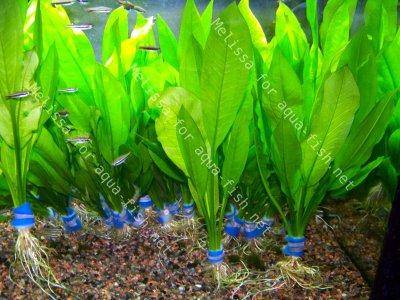

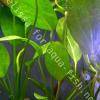 Echinodorus “Ozelot”
Echinodorus “Ozelot” Echinodorus “Red Flame”
Echinodorus “Red Flame” Echinodorus “Red Special”
Echinodorus “Red Special”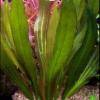 Echinodorus “Rubin”
Echinodorus “Rubin” Echinodorus “Tricolour”
Echinodorus “Tricolour”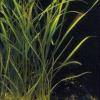 Echinodorus angustifolius
Echinodorus angustifolius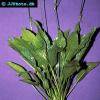 Echinodorus bleheri
Echinodorus bleheri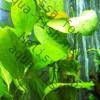 Echinodorus cordifolius
Echinodorus cordifolius Echinodorus grandiflorus
Echinodorus grandiflorus Echinodorus horemanii
Echinodorus horemanii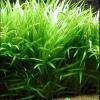 Echinodorus latifolius
Echinodorus latifolius Echinodorus macrophyllus
Echinodorus macrophyllus Echinodorus major
Echinodorus major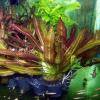 Echinodorus osiris
Echinodorus osiris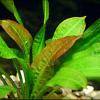 Echinodorus parviflorus
Echinodorus parviflorus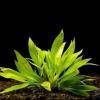 Echinodorus quadricostatus
Echinodorus quadricostatus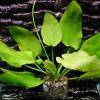 Echinodorus schlueteri
Echinodorus schlueteri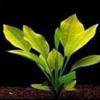 Echinodorus subalatus
Echinodorus subalatus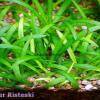 Echinodorus tenellus
Echinodorus tenellus Echinodorus uruguayensis
Echinodorus uruguayensis Sagittaria graminea
Sagittaria graminea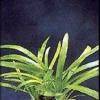 Sagittaria platyphylla
Sagittaria platyphylla Sagittaria subulata
Sagittaria subulata